Prepare for Brake Safety Week
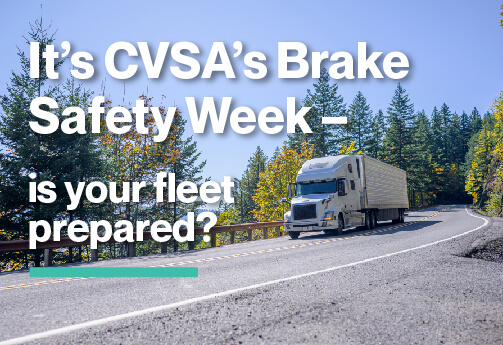
During CVSA’s Brake Safety Week, enforcement across North America will inspect tens of thousands of commercial vehicles in an effort to identify vehicles with poorly maintained or installed brake systems and get them off the road.
Well-prepared fleets have likely already provided drivers with pre- and post-drive checklists that include hoses, tubing and air lines. However, it’s always good to remind drivers to keep brakes top of mind.
“It’s absolutely critical to make sure each and every truck in your fleet has brakes that are installed properly and maintained consistently according to manufacturer guidelines,” said HDVI Fleet Services Representative Bob Carl.
One way that fleets can take brake safety preparation to the next level is through the use of telematics. The HDVI Fleet Services team regularly reviews telematics data with their insureds to help fleets better understand the real-world impact of brake safety.
“Having brakes that work properly can mean the difference between an annoying road encounter and a catastrophic collision,” said Bob. “Vehicle maintenance and driver behavior go hand in hand. Certain driver behaviors can cause unnecessary wear and tear on brakes. This will cause additional maintenance, which then increases costs. It’s a very hard cycle to break.”
By analyzing telematics data and reviewing camera footage, fleets can see how brakes are being used on the road. They can then identify patterns and behaviors that can be addressed with the whole fleet or with an individual driver.
While each fleet and telematics set up is different, here are a few ways that telematics data and camera footage can help fleets keep an eye on their brake safety.
Driver Coaching Opportunities
When drivers are on the road, they should be doing all they can to keep themselves – and other drivers – safe. Therefore, it is important that they understand the relationship between key behaviors and vehicle maintenance.
When it comes to brake safety, there is a significant relationship between speed, following distance and hard braking. The faster you drive, the longer it will take for you to stop, and the closer you are to the vehicle in front of you, the harder you will have to brake. Hard braking events lead to unnecessary stress on your brakes and put you at much higher risk for accidents.
Telematics and cameras provide a great deal of information that can help coach drivers. The below screenshot shows speed (along with speed limit), how close the truck is to other vehicles and how the driver is preparing for the traffic signal ahead.
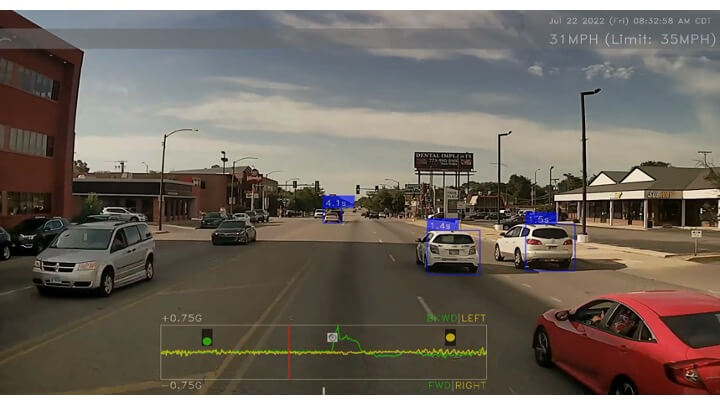
Understanding Data in Context
Cameras can be extremely helpful in understanding why drivers performed certain actions. This can be especially useful for driver coaching and, in certain situations, driver rewards and recognition. Without a review of the camera footage, this incident may have been categorized as simply a hard braking incident.
For example, in the below situation captured by an in-cab safety dashcam, it shows the driver was doing everything right. They were maintaining an appropriate speed for the situation and were allowing plenty of following distance. Those behaviors, coupled with well-maintained brakes, helped the driver avoid potentially deadly situation when a vehicle begins cutting across lanes.
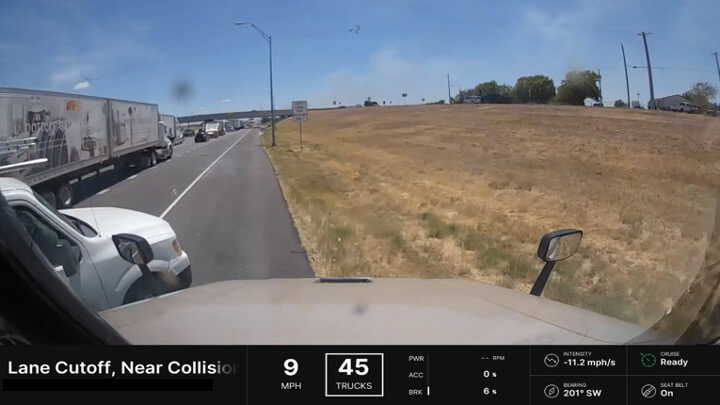
Map it out
Understanding exactly where drivers are exhibiting certain behaviors makes it easier for fleets to create plans for improvement.
In addition to providing driver-specific data, HDVI analyzes your telematics data to provide heat maps for specific driver actions including speeding, traffic light violations and following events. “We take the data, analyze it and provide insights that make it easy to see where they should make changes that will be most impactful in improving safety.”

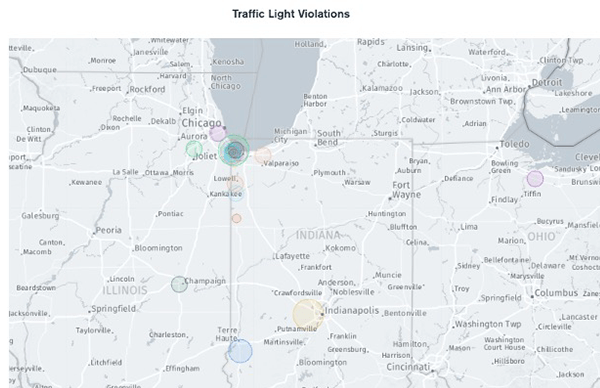
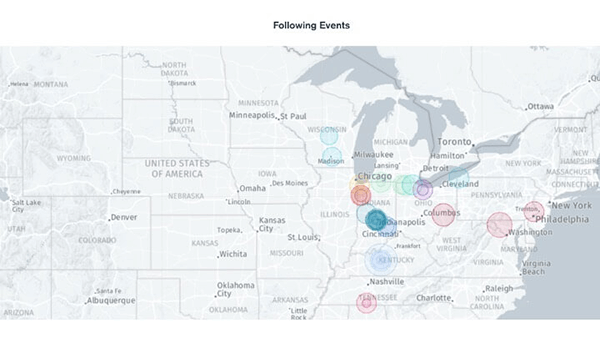
At HDVI, we are focused on using cutting-edge technologies to help fleets mitigate risks, increase operational efficiencies, and save money. Contact us today to learn more about our dynamically priced insurance or to find an agent in your area.


